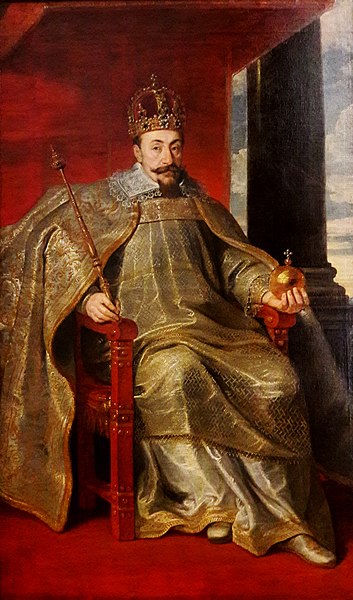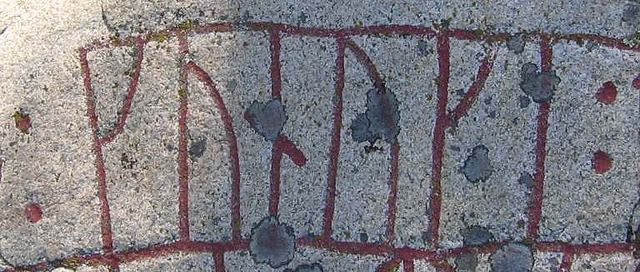Sigismund III Vasa was King of Poland and Grand Duke of Lithuania from 1587 to 1632 and, as Sigismund, King of Sweden and Grand Duke of Finland from 1592 to 1599. He was the first Polish sovereign from the House of Vasa. Religiously zealous, he imposed Roman Catholicism across the vast realm, and his crusades against neighbouring states marked Poland's largest territorial expansion. As an enlightened despot, he presided over an era of prosperity and achievement, further distinguished by the transfer of the country's capital from Kraków to Warsaw.
Portrait by Pieter Soutman, c. 1624
John III, his wife Catherine Jagiellon and young Sigismund imprisoned at Gripsholm. An 1859 painting by Józef Simmler.
Sigismund in his youth, 1585.
Chancellor Jan Zamoyski staunchly opposed the pro-Habsburg alliance.
The monarchy of Sweden is centred on the monarchical head of state of Sweden, by law a constitutional and hereditary monarchy with a parliamentary system. There have been kings in what now is the Kingdom of Sweden for more than a millennium. Originally an elective monarchy, it became a hereditary monarchy in the 16th century during the reign of Gustav Vasa, though virtually all monarchs before that belonged to a limited and small number of political families which are considered to be the royal dynasties of Sweden.
Monarchy of Sweden
kunuki, i.e. konungi, the dative case for Old Norse konungr ("king"). A runic inscription of the 11th century (U11) refers to King Håkan the Red.
Gustav I, portrayed here in 1542 by Jakob Binck, legally created the hereditary monarchy and organized the Swedish unitary state.
The Lion of the North: King Gustavus Adolphus depicted at the turning point of the Battle of Breitenfeld (1631) against the forces of Johann Tserclaes, Count of Tilly








